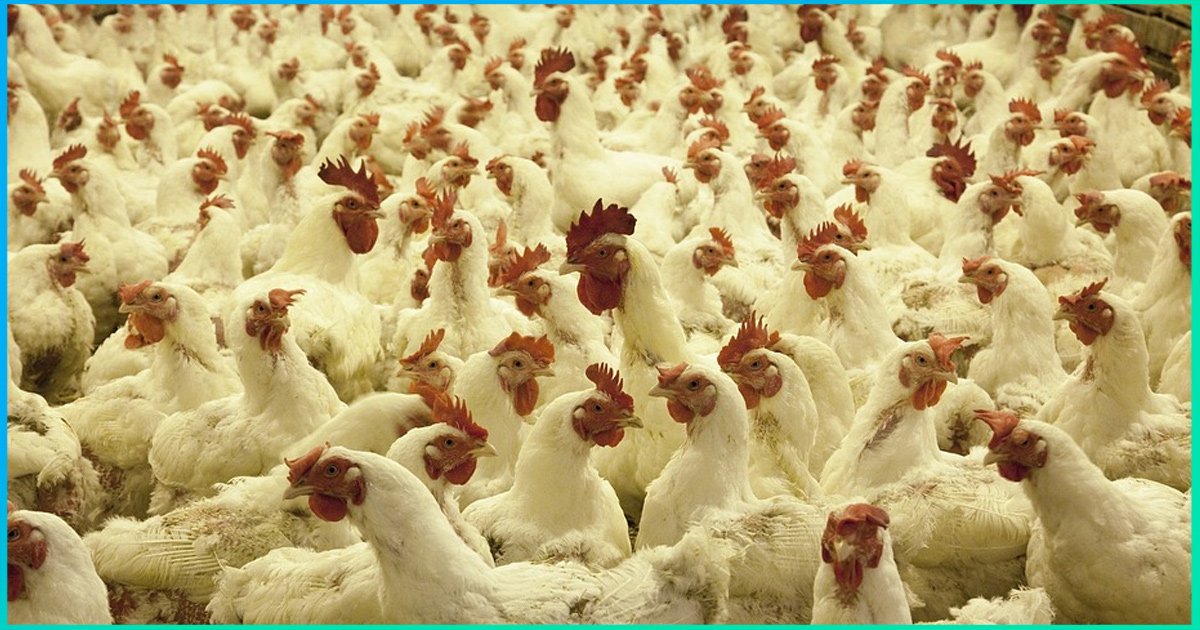
Chicken You Eat Has 'Colistin', An Antibiotic Used For Terminally Ill Patients Or Sick Animals
2 Feb 2018 10:49 AM GMT
Colistin, termed by doctors as “last hope”, is an antibiotic used to treat patients who are critically ill with infections that have become resistant to nearly all other drugs. Poultry farms in India use the drug on chicken to protect them against diseases or to make them grow weight faster so more birds can be grown each year, revealed by The Bureau of Investigation Journalism.
The World Health Organisation (WHO) calls colistin “critically important to human medicine” to be restricted in animals and banned as growth promoters.
What are the effects of using Colistin in farming?
Colistin is manufactured by two companies in India, but the country imports at least 150 tonnes of the antibiotic every year. The Bureau has tracked more than 2,800 tonnes of colistin for use in animals shipped to India, Vietnam, South Korea, Russia, Nepal, Guatemala, Colombia, Bolivia, Mexico and El Salvador in 2016.
Animals, especially poultry, in India are being dosed with the drug even though they may not require it. Unrestricted use of veterinary colistin in farming increases the chances bacteria will develop resistance to them.
In India, at least five pharmaceutical companies are openly advertising products containing colistin as growth promoters, despite health warnings by the medical community. One of these companies, Venky’s is also a major poultry producer. Apart from selling animal medicines and creating its own chicken meals, it also supplies meat directly and indirectly to fast food chains in India such as KFC, McDonald’s, Pizza Hut and Dominos. Venky’s sells colistin to farmers in India as a growth promoter. The antibiotic is given to the chicken we consume.
Bacteria can carry genes that allow them to survive exposure to the antibiotics used to treat them. Overuse of colistin increases the chance of bacteria developing resistance to it, leaving them useless when treating patients. This is called antibiotic resistance and is an example of evolution in action.
The gene that carries antibiotic resistance can be passed between bacteria, allowing for the creation of bacteria (over successive generations) that carry genes that enable it to be resistant to many different antibiotics. This is called a superbug, leading to untreatable infections.
“Colistin is the last line of defence”, said Professor Timothy Walsh, who is also an adviser to the UN on antimicrobial resistance. “It is the only drug we have left to treat critically ill patients with a carbapenem-resistant infection. Giving it to chickens as feed is crazy.”
“Colistin-resistant bacteria will spread on the chicken farms, in the air surrounding them, contaminate the meat, spread to the farm workers, and through their faeces flies will spread it over large distances”, he continued.
Indian poultry adding to the global superbug crisis
The World Health Organisation (WHO) has described superbugs as the greatest threat to human health. If antimicrobials stop working, doctors won’t have effective drugs to treat deadly infections. Poor or inadequate public health treatments assists this process, potentially spreading pathogens around the world.
Antimicrobial resistance (AMR) in the form of superbugs causes an estimated 700,000 deaths annually and – at this rate – is predicted to cause 10 million deaths annually by 2050.
India has a booming poultry industry. Between 2003 and 2013, the amount of chicken produced doubled in the country. The majority of poultry is now produced by commercial farms, contracted to major companies like Venky’s. Researchers who tested Indian meat from supermarkets in 2014 found it contained residues of six antibiotics, suggesting they were being used liberally on farms. (The Indian Ministry of Agriculture said the residues were well within the range allowed by other international agencies).
The rising demand for chicken in India can be attributed to its religious versatility. Unlike beef and pork, it is eaten by both Muslims and Hindus. Experts predict the rising demand for protein will cause a surge in antibiotic use in livestock. India’s consumption of antibiotics in chickens is predicted to rise fivefold by 2030 compared to 2010, while globally the amount used in animals is expected to rise by 53%
Using antibiotics as growth promoters has been banned in the European Union since 2006, and in the US was made illegal last year. In its National Action Plan on AMR published in 2017, the Indian government banned using antibiotics as growth promoters. The plan is not currently linked to any regulatory action.
Indian farmers are using antimicrobials as a substitute for good farming practices. “If you go to the average poultry farm in Punjab you see these are all lacking: the nutrition is not there, hygiene is awful. So they are using the antibiotics as a substitute of keeping the animals alive”, according to Professor Ramanan Laxminarayan, director of the Centre for Disease Dynamics, Economics and Policy. The reason this is done is because antibiotics are cheap. “If the true cost was factored in – the cost of resistance – it wouldn’t seem like such a good option”, he added.
In India, awareness around superbugs is lacking. In addition to stricter international framework, greater funding for antibiotic research, national government policies and further regulations on private pharmaceutical companies, a social change needs to be brought about.
Read the original report by The Bureau of Investigation Journalism here.
 All section
All section













